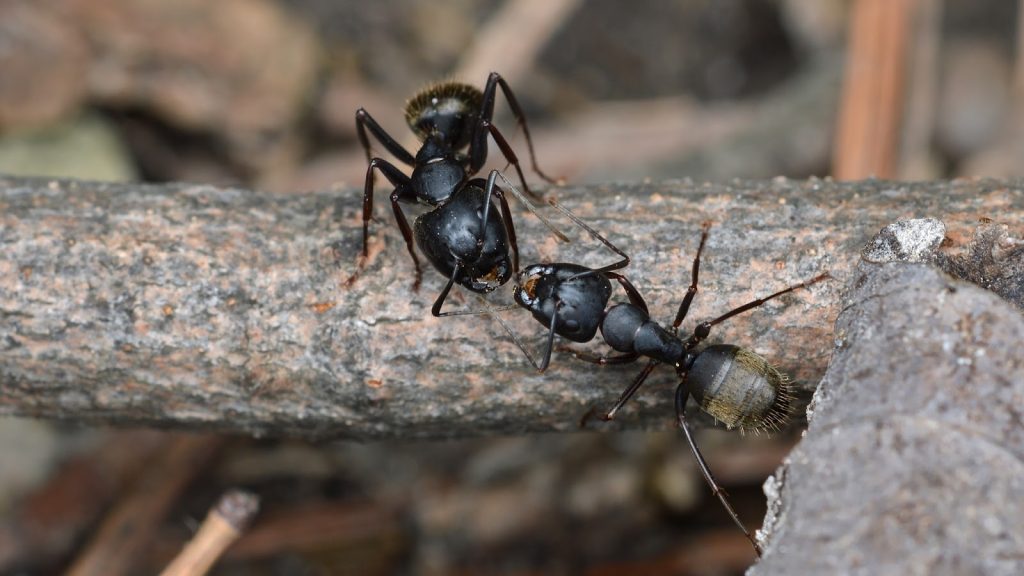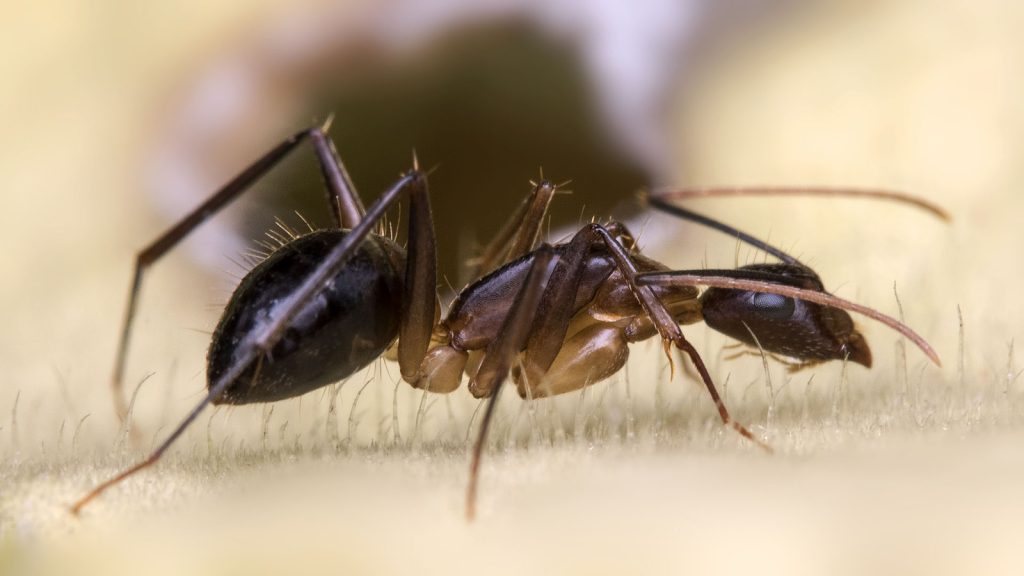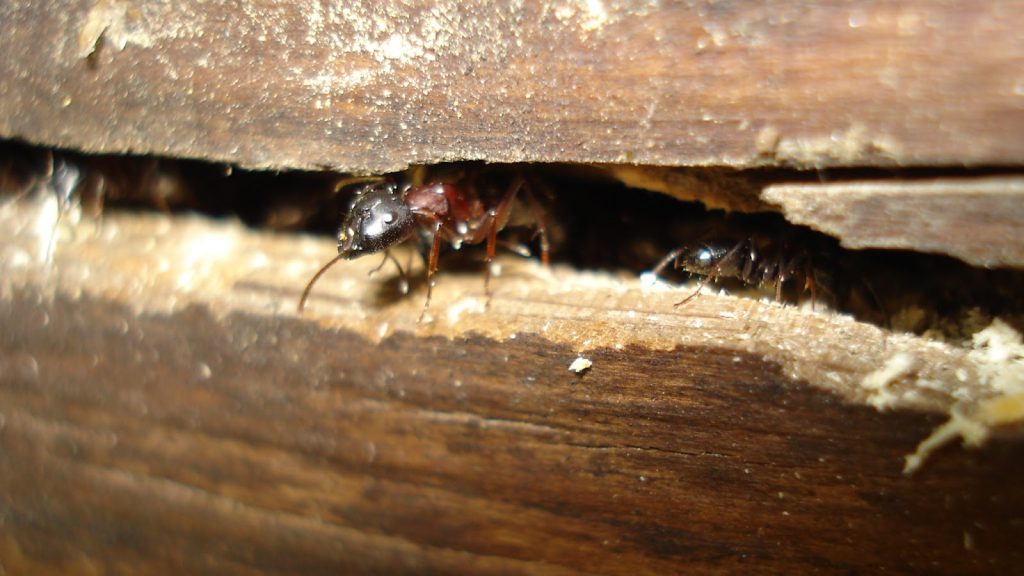Carpenter ants are best known for their nesting habits. They excavate wood to create galleries for their nests. But carpenter ants are also notoriously difficult to locate because of their secretive nature, and many people may wonder – where do they live in the world?
This article will take an in-depth look at where carpenter ants live and what environments they prefer to call home. We’ll also discuss their behavior, diet, and potential problems that come from having them living close by.
Overview of the Carpenter Ant
Carpenter ants are a large species of ant, ranging from 1/4 to 3/4 inch long. They are black or reddish-black, and some species have red and yellow stripes or spots on the thorax.
Some carpenter ants even look like they are wearing tiny top hats!
Carpenter ants get their name from the galleries they form in wood. To create these nesting sites, the ants will chew away at moist wood, preferably softwood species, and create tunnels and chambers for their colonies.
These galleries can be extensive, with many winding paths that are difficult to trace back to the original entry point.
Carpenter Ants: Where Do They Live?

Carpenter ants can be found in a variety of habitats around the world. They are often found in moist, wooded areas and have been spotted in tree stumps, under logs and stones, and even inside buildings.
In the United States, carpenter ants are most often seen in the eastern and western regions. In Europe, they are found mainly in the southern countries.
In Asia and Australia, carpenter ants can also be spotted living in forests and wooded areas. They have even been spotted living in urban environments, although this is much less common.
They can also be found in Canada, Central and South America, and other tropical regions.
What Environments Do Carpenter Ants Prefer?
Carpenter ants thrive in moist environments with plenty of wood nearby for them to access. Specifically, they prefer decaying wood, which is easier to tunnel into and make their nests.
They also need access to moisture to survive. This means carpenter ants are found around areas with high humidity, like moist soil or near water sources.
They can be found inside buildings with plenty of dampness due to leaking pipes or condensation.
How Carpenter Ants Live

Carpenter ants have complex social behavior and live in colonies with a central nest and satellite nests.
The main nest is typically in damp wood, such as tree stumps or wet logs, while the satellite nests can be found in buildings, under rocks, or even in the ground.
The workers search for food, protect the nest, and expand it as needed by creating new tunnels and galleries. The queen is responsible for laying eggs, while the male ants are the only ones capable of reproducing.
To build their nest galleries, carpenter ants chew through wood and other materials with their strong mandibles.
They also have a strong sense of smell, allowing them to detect food sources from far away.
Carpenter Ants in Homes
Carpenter ants are omnivorous. They eat plant and animal matter. Their diet consists mainly of honeydew (sugary sap from plants), aphids, and other insects. They will also feed on sweet foods such as jelly, cake, and syrup.
Carpenter ants can become a pest in homes due to their habit of invading kitchens and pantries in search of food. Carpenter ants attack at times and can cause nasty bites.
They tend to be especially attracted to sugary foods and will often chew through cardboard containers and other types of packaging to get to the food inside.
The Potential of Carpenter Ant Infestation

The black carpenter ant can become problematic when they nest inside homes or buildings. They are capable of causing structural damage by chewing through wooden beams and walls to create galleries for their nests. (See What Damage Can Carpenter Ants Do?)
They can also contaminate food sources and spread bacteria, which is a health hazard.
Contact a pest control professional immediately if you notice carpenter ants or signs of them, in or around your home, such as piles of sawdust near windows or walls, trails on the floor, or actual ant sightings.
An exterminator can identify the ant species and recommend appropriate action.
How To Identify Them and Carpenter Ant Colonies
You need to identify carpenter ants to get rid of them. Most carpenter ant species can be identified by their large size and distinctive colors. The most common carpenter ant is Camponotus pennsylvanicus, which is black with reddish legs.
In addition to size and color, black carpenter ants can also be identified by their nesting habits. These insects build intricate networks of tunnels in wood structures, often leaving behind sawdust as evidence of their presence as they eat wood.
Tips for Controlling Carpenter Ants
To control carpenter ants, it’s important first to identify the source.
Cleaning and Sanitation
- Clean up all food sources, including spills or crumbs.
- Seal all entry points to keep carpenter ants from entering your home.
- Remove damp wood and other potential nesting sites from the house.
- Clean around exterior doors and windows regularly.
Using Pesticides
- Use bait to eliminate the colony of worker ants. Bait is most effective when placed near the site of activity.
- Use a liquid insecticide to kill any remaining foraging ants and destroy nests.
- Always read and follow the directions on the label when applying any pesticide.
Preventative Measures
- Repair any leaking pipes or other sources of moisture.
- Trim trees, shrubs, and other plants regularly to help reduce harborage areas.
- Seal cracks and crevices around windows and doors to prevent entry points.
- Regularly inspect the home for signs of carpenter ant activity.
- Contact a professional pest control company if necessary.
The best way to protect your home from carpenter ants is to take preventative measures and keep the environment as clean and dry as possible. With proper identification and control methods, you can reduce the population of carpenter ants in your home.
Final Thoughts
Carpenter ants are common pests worldwide, with a wide distribution in North America, Europe, Asia, and Australia. They typically nest in moist wooded areas but can also enter homes and buildings in search of food sources.
Carpenter ants have strong mandibles that allow them to chew through wood and create their nest galleries, which can lead to structural damage if left unchecked. In case of infestation, it is important to call a pest control professional for removal and prevention.
Recommended Reading:
